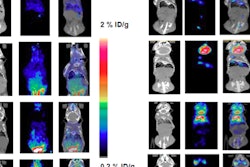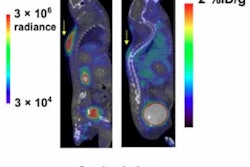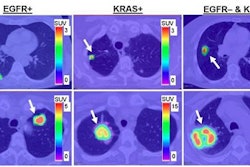Researchers have combined PET scans with a newly developed probe to help determine the efficacy of cancer treatments, according to a study published April 30 in Cancer Research.
In the approach, PET is used to measure a protein known as granzyme B, which is released by immune cells to kill cancer cells. The technique could help determine which immune checkpoint inhibitors worked or failed in the course of early cancer treatment in mouse and human tumors (Cancer Res, April 30, 2017, Vol. 77:9, pp. 2318-2327).
The ability to tell which patients are likely to benefit from immunotherapy early in their treatment process can greatly improve individual patient care and help accelerate the development of new therapies, said senior author Dr. Umar Mahmood, PhD, a professor of radiology at Harvard Medical School and director of the division of precision medicine at Athinoula A. Martinos Center for Biomedical Imaging at Massachusetts General Hospital.
The researchers attached a probe that binds to granzyme B to a radioactive atom. They then used PET to image the entire body to see where immune cells are actively releasing the tumor-killing granzyme B.
The probe was initially tested on tumor-bearing mice before and after treatment with immune checkpoint inhibitors. Mahmood and colleagues found that one group of mice had a high PET signal, meaning high levels of granzyme B in the tumors, while the other group had a low PET signal.
The mice with a high PET signal responded successfully to the therapy and their tumors regressed, while the mice with the low PET signal did not respond well to the therapy and their tumors continued to grow.
The researchers then tested the probe on nine human melanoma biopsy samples. This included six patients who were treated with nivolumab (Opdivo) and three patients who received pembrolizumab (Keytruda). High levels of granzyme B were detected in the samples from responders; levels were much lower in the samples from nonresponders.
The probe has not yet been tested in the clinic; however, the researchers are pursuing this step.



















